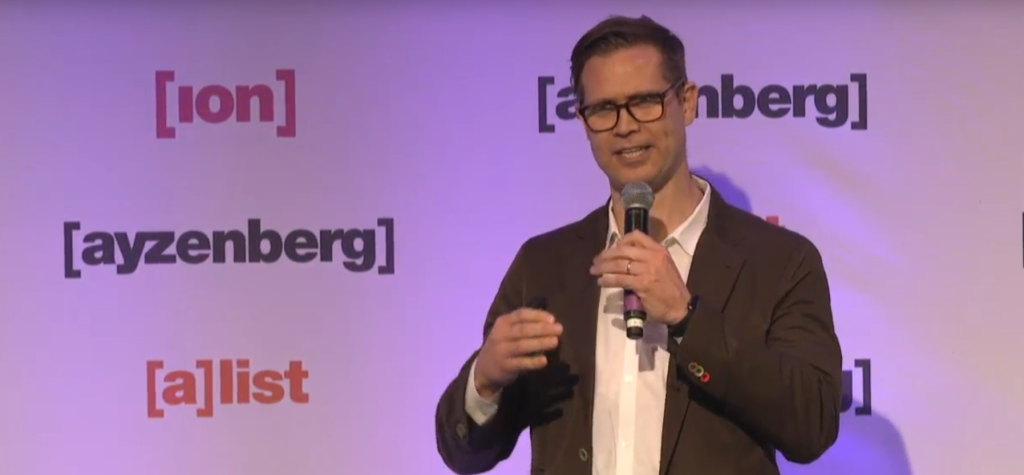When you think of storytelling, films and books come to mind—but what about new platforms like virtual reality or 360 video? Believe it or not, the same basic themes that make Star Wars a modern mythos can create an everlasting legacy, regardless of the medium used. During the [a]list summit, Joey Jones, creative director for Ayzenberg shared some valuable insight into why some stories are forgotten and why others last forever.
Explanation, meaning and ritual
“Myths are public dreams and dreams are private myths” – Joseph Campbell
Joseph Campbell was a mythologist who traveled the world learning about how stories are shared. When ancient societies were spread far apart with little to no contact, it’s amazing to think about how many stories have managed to survive to modern day. The reason these tales endured, it turns out, was because of how they were told. Campbell realized that the most popular stories offered explanation, meaning and ritual to those listening, and all these tales used the same 20 to 26 beats in their structure.
Dubbed ‘The Hero’s Journey,’ Campbell’s breakdown of successful myth has evolved into what screenwriters call the three act structure. Joey Jones has experience working in Hollywood, even selling a development deal to Disney. His experience through the world of storytelling as a business has provided him with the tools to understand how The Hero’s Journey applies to any successful story, no matter how it’s delivered. Jones breaks down this story progression into six basic beats:
- Departure – here we meet our protagonist in their uncomfortable and mundaine environment
- Call to adventure that he/she refuses – they don’t think they’re ready for the challenge
- Mentors and allies help the hero prepare – the main character is usually given a ‘talisman’ to help them. Examples include Luke Skywalker’s light saber and Marty McFly’s time-traveling Delorian
- Crossing the threshold – our hero takes the first step out of his/her comfort zone and accepts the challenge. (Stepping through the wardrobe in The Chronicles of Narnia, Alice jumps down the rabbit hole, etc.)
- Initiation – through trials, travels and temptations, our hero comes back a changed person with treasure, power, wisdom or all three.
- Return – armed with these new experiences, the hero returns to where he/she started. The result can be redemption, salvation or destruction.
The evolution of storytelling
In Jonah Sachs’ book, Winning the Story Wars, he describes the evolution of storytelling from ancient civilizations to modern day viral videos. This evolution is important to understand because it applies to the open-source nature of today’s content creation.
- Oral Tradition – only the best stories survived and no one owned those ideas. Each story evolved through the elaboration or storytelling style of the individual, which allowed for a story or idea to spread freely.
- Broadcast Tradition – when the first book was published, it created gatekeepers who determined what ideas could be shared and in what way. This was the dawn of what Sachs refers to as ‘survival of the richest.’ Although you’re free to enjoy the story they are telling you, the idea is controlled by an intellectual property owner and you are not allowed to share it without paying.
- Digitoral Era – in the digital age, the best stories once again rise to the top. A great example of this is the idea of a ‘meme,’ or viral video. Although intellectual property still exists, parodies are common.
A brand can either embrace or challenge how the public shares their ‘story’ through parody, social media and the like.
Today and beyond
Stories are finding a new home on VR, AR and 360-degree video and these immersive worlds are creating new, non-linear ways to introduce concepts to modern audiences. Jones is optimistic about the prospect of exploring new mediums, but reminds us that The Hero’s Journey should remain in the forefront of our storytelling strategies.
“If this new advance in technology is here to stay and not a novelty,” says Jones, “It’s gotta talk about these archetypes; the stuff that’s hard wiring us—this myth building which is so important to telling stories. It’s also important to realize that we’re in this digitorial era like, I think Facebook gets it. They’ve put a ton of money into Oculus, they’ve also put out this 360 camera which is open-sourced, that’s pretty ballsy. And we also need to realize that storytelling is communal. The fact that my wife gets mad at me when I watch Breaking Bad episodes without her is a testament that storytelling, even though we’re standing or sitting right next to each other watching the same flat screen and not saying anything, there is a sort of special bond that we have when we’re listening to stories.”
Jones left us with a new way to think of content creation in the digital age, and believes that VR, AR and 360 could take audiences to new worlds in a compelling way, just as the myths of old.
“Transmedia [has been] fighting for its place for many years now.” he concluded. “I think that can really find its nest, its home and really be able to tell stories that cross many different platforms.”
